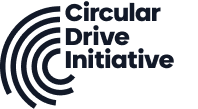Summary
Chia co-authored a new whitepaper on the impact of data sanitization on the circular economy, suggesting a practical solution to data security and storage reuse. Read the whitepaper here.
Background
Shortly after the Chia mainnet launch, hard drives worldwide were sold out, prices increased, and lead times increased. Because of the dramatic increase in demand, a few IT asset disposition (ITAD) providers wanted to know more about Chia and how drives are used for farming. When meeting with these ITADs, we learned the actual scale of how many drives were shredded per year for their customers. We pleaded to free these drives up for Chia farming, but it wasn’t up to them – it was up to their customers. In the hyperscale and enterprise space, any leak of customer data is catastrophic.
The idea for Circular Drive Initiative was born – to activate collaborative work between hyperscalers, drive vendors, and ITADs, dedicated to driving secure storage reuse. Chia joined OCP to start discussing sustainability with the industry leaders in technology. The CDI workgroup decided sanitization and reuse was the first and most important topic to tackle.
Addressing the issue, not the symptoms
I discovered through my storage network that a new specification on media sanitization was being developed, and joined the IEEE Security in Storage Working Group (SISWG) to participate. In the first couple of meetings, I shared my learnings on drives being shredded. Some of the folks in the workgroup represented the companies making drive shredders and strongly opposed some of our practical solutions that keep the drives in one piece.
Thankfully, we had a strong representation from the storage industry that understood the engineering behind media sanitization*, including cryptographic erase to instantly wipe all the data on a drive by changing the media encryption key. I contributed the sustainability and media sanitization section to the specification – a small but essential piece to the puzzle in drive reuse, encouraging readers that drives can be sanitized securely and left in a reusable state.
*Sanitization: A process or method to render access to target data on storage media infeasible for a given level of effort.
Implementing circular practices
IEEE approved the new specification in June of 2022. We’re now working to convince the world of proprietary drive wiping solutions, shredding companies, and data destruction businesses to embrace the new specification and drive adoption among the hyperscale customers. The sustainability folks at the companies are onboard and fully engaged through CDI and OCP on the issue, driving circularity pilots and making public commitments on reuse alongside the net zero 2030 goals.
The scale of this issue will take time. Still, it is an important and eminently solvable challenge – we’ll need buy-in from cross-functional teams at hyperscale and enterprise customers, public commitments, and collaboration across multiple industries.
Conclusion
We hope the whitepaper will significantly impact the stakeholders in this broad ecosystem by offering a secure way to reuse drives. There are still more problems to solve to get to reuse at scale. Still, the whitepaper highlights practical solutions available today and areas for future innovation in storage sustainability and designing products for circularity.
The Circular Drive Initiative is tackling these issues head-on by gathering industry leaders and developing sustainable standards that incentivize circular business models.
I will be speaking with Seagate about the whitepaper at the upcoming OCP Global Summit in a session titled: Data Bearing Device Security. How Data Sanitization Contributes to a Circular Economy.



Leave A Comment